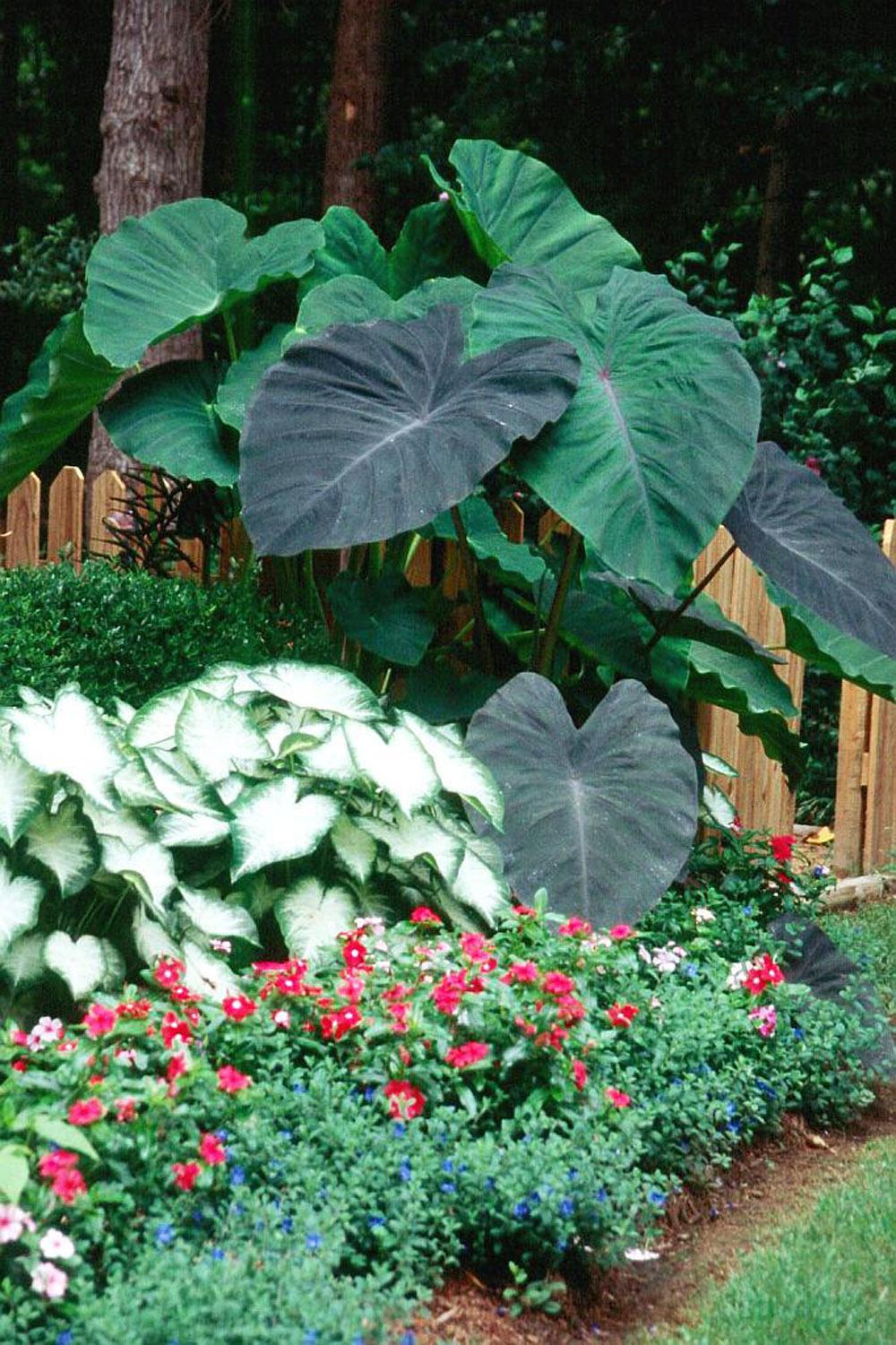Information Possibly Outdated
The information presented on this page was originally released on September 8, 2003. It may not be outdated, but please search our site for more current information. If you plan to quote or reference this information in a publication, please check with the Extension specialist or author before proceeding.
Black Magic will give gardens tropical flair
By Norman Winter
MSU Horticulturist
Central Mississippi Research & Extension Center
Several landscapes in Kosciusko recently caught my eyes. This Mississippi town is not in the Tropics, but wandering into one back yard made me feel as though I were in the Balata Gardens of French Martinique. The plants that gave me the Caribbean feel were huge Black Magic elephant ears.
Known botanically as Colocasia esculenta, the elephant ear has no equal in transforming a regular garden into a tropical paradise. Every year garden centers are well stocked with giant bulbs of these and other elephant ears that will grow into plants that reach 5 to 6 feet in height and defy logic with their 3-foot leaves on 4-foot-long petioles.
The plants get even larger as the heat and humidity reach levels that send gardeners indoors to the cool comforts of air-conditioning.
It should be obvious that if gardeners in Kosciusko can do it, the rest of us can too. Select a site in morning sun and afternoon shade, although fine specimens are often seen in full sun, provided water is readily available.
The soil should be fertile and well drained for winter survival. If the soil is tight, heavy clay, amend with 3 to 4 inches of organic matter. While preparing the soil incorporate 2 pounds of a slow-release 12-6-6-fertilizer per 100 square feet of bed space. Plant the large tubers deep enough so the entire bulb is 2 inches below the soil surface.
Feed with light monthly applications of fertilizer and maintain moisture, particularly during prolonged dry periods. Remove tattered and unattractive leaves to keep tidy. Tubers can be dug, separated, dried and stored for winter protection, or they can be left in the ground in warmer zones.
In well-drained soil, tubers usually will return with no problem, even in zone 7. Cold weather coupled with excess moisture causes decay.
Grow the Black Magic elephant ear with other plants with coarse-textured foliage like bananas, cannas, gingers or, in the case of the Kosciusko garden, caladiums. They also combine well with ornamental grasses and have the ability to work with almost any other garden flower. Use them around water features or to create lush poolside beds.
Of course, you can always find the green types of elephant ears that are mostly sold generically. But do look for specialty varieties that are in demand and bring a premium price.
Antiquorum, also sold as Illustris, features dark green leaves with maroon to purple markings between the veins. Euchlora's dark green leaves are edged in purple, and Fontanesii features dark purple petioles and peduncle.
Black Magic and most other elephant ears originate in tropical Asia and are actually considered a food staple under names like poi or dasheen. I recommend you get your starches from some tastier dish.
On the other hand, you can't beat the magical transformation they will make in your landscape. Give them a try, and you just might have the urge to buy a Hawaiian shirt to enhance your tropical experience.








